Potential Layouts






Potential Layouts






Final Outcomes















Contact Sheet
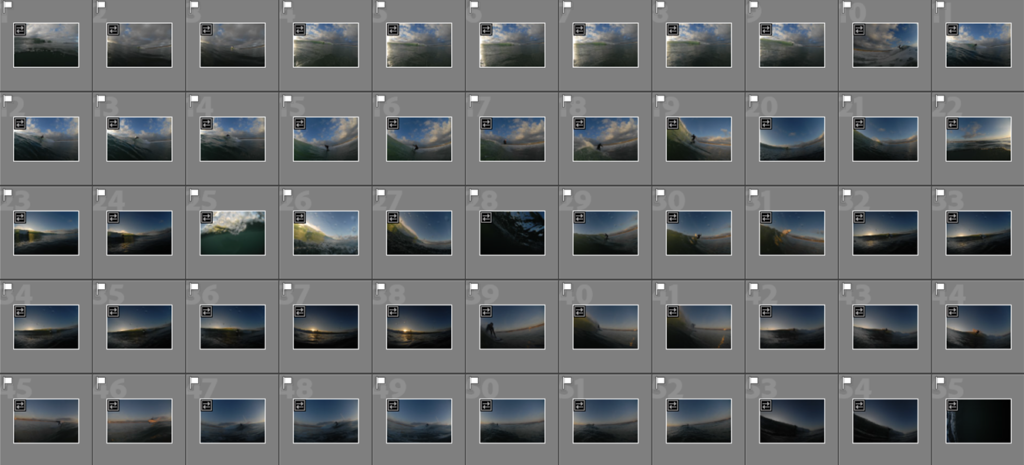
Image Selection – Narrowed down to a series of strongest outcomes
Editing Process
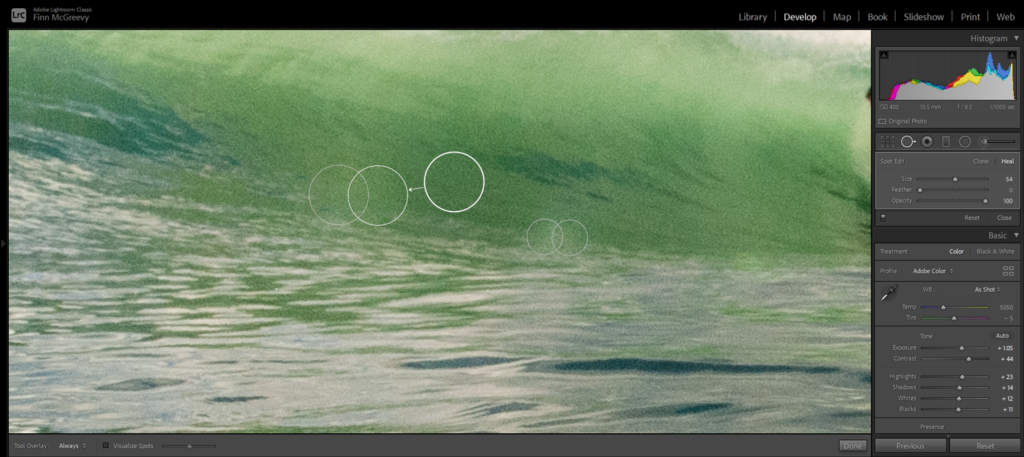

Spot Removal Tool – Glare/Blemishes/Water Droplets
Before/After – Tonal Adjustments


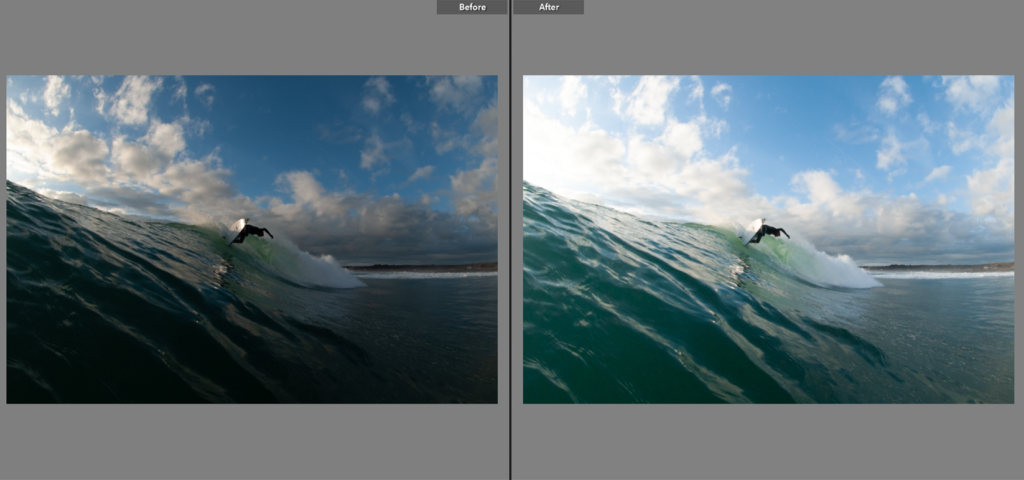
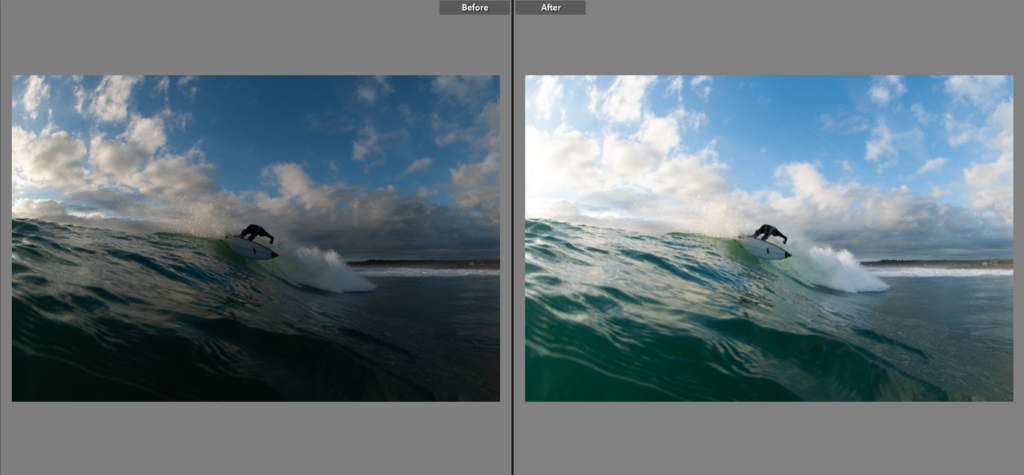
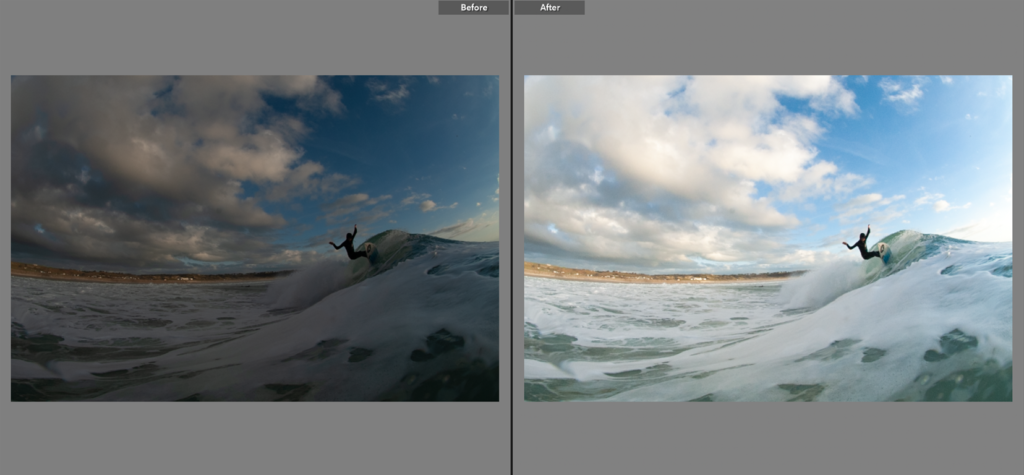


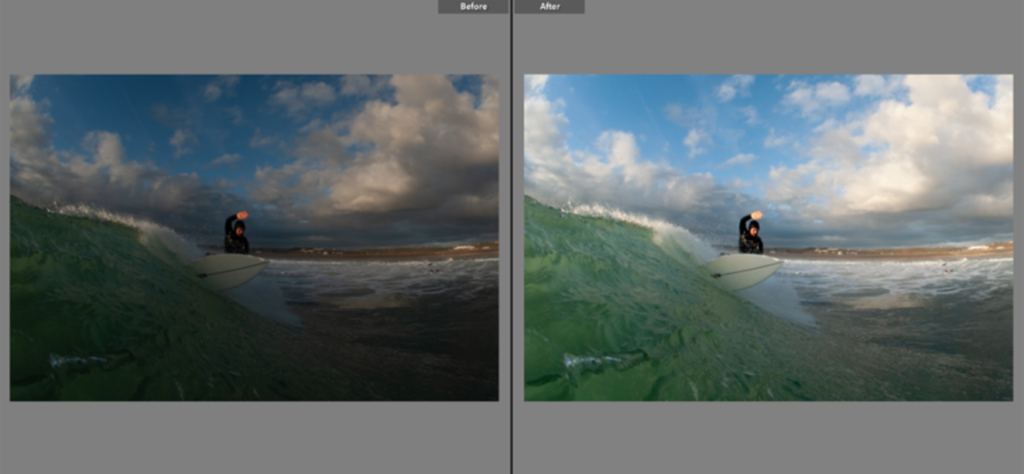

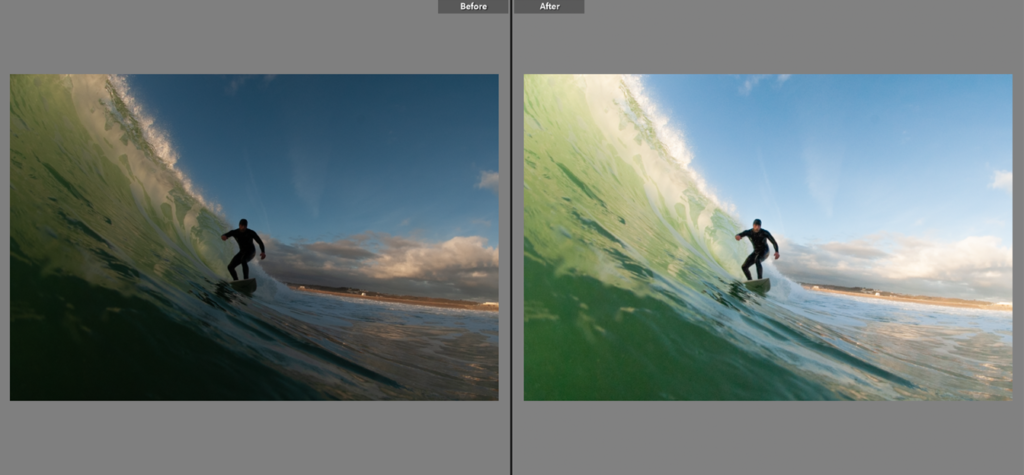
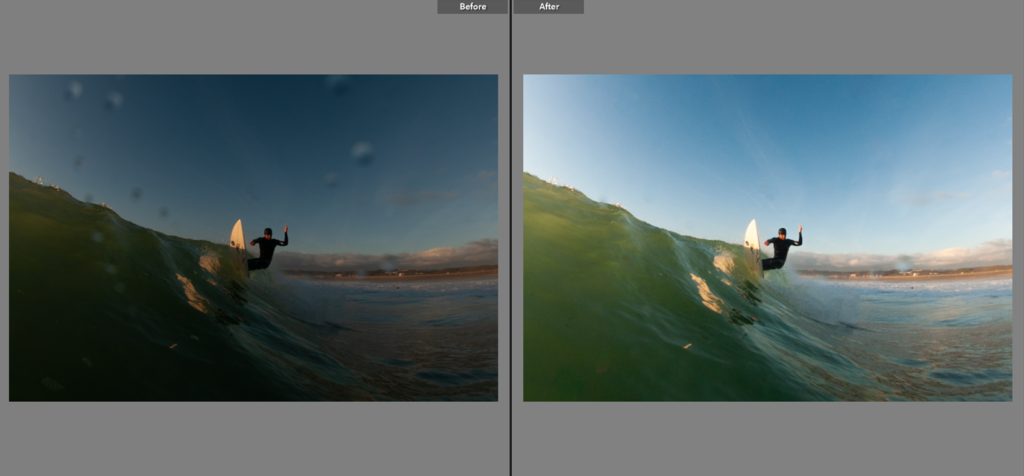
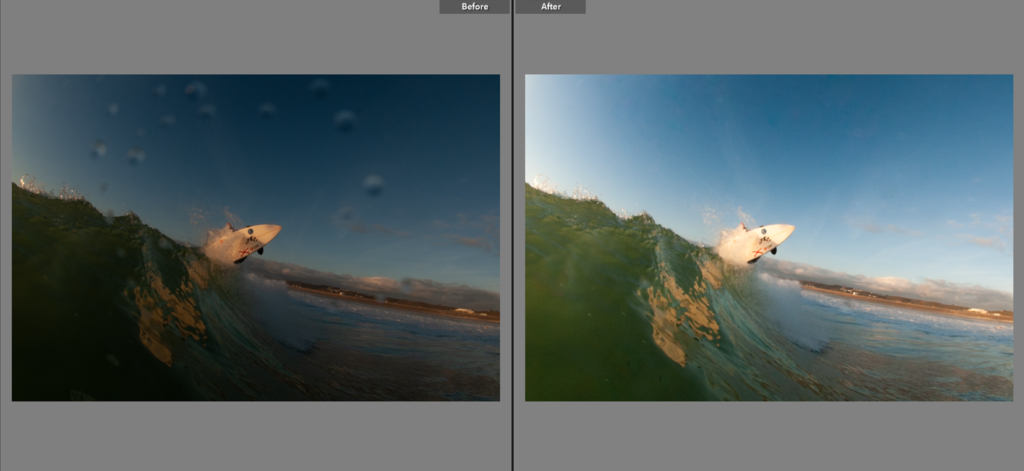
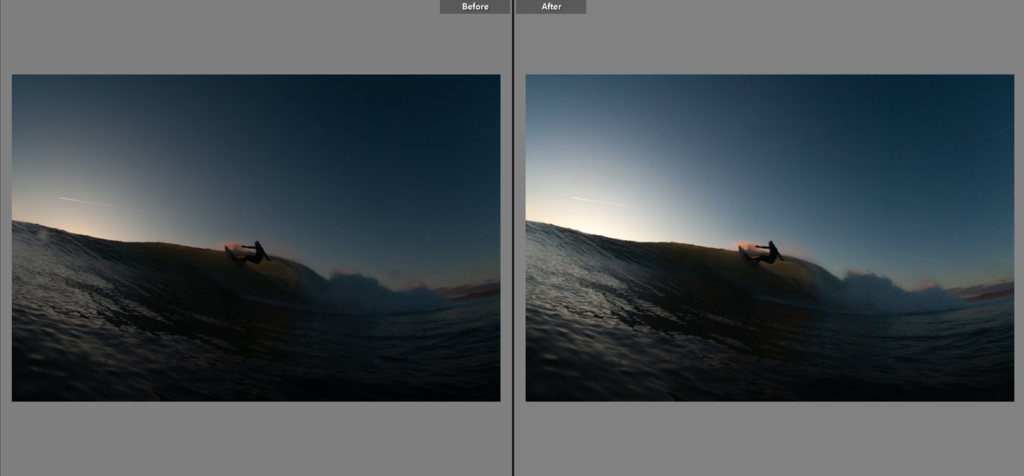
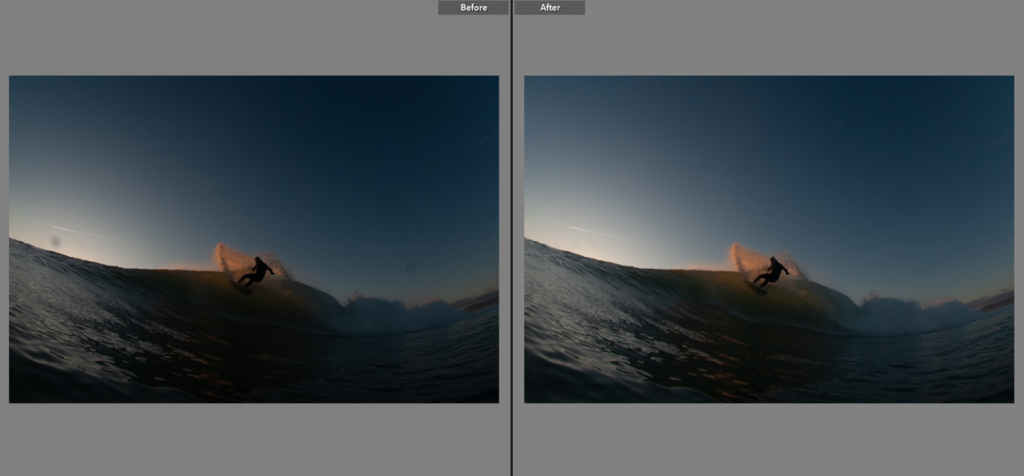
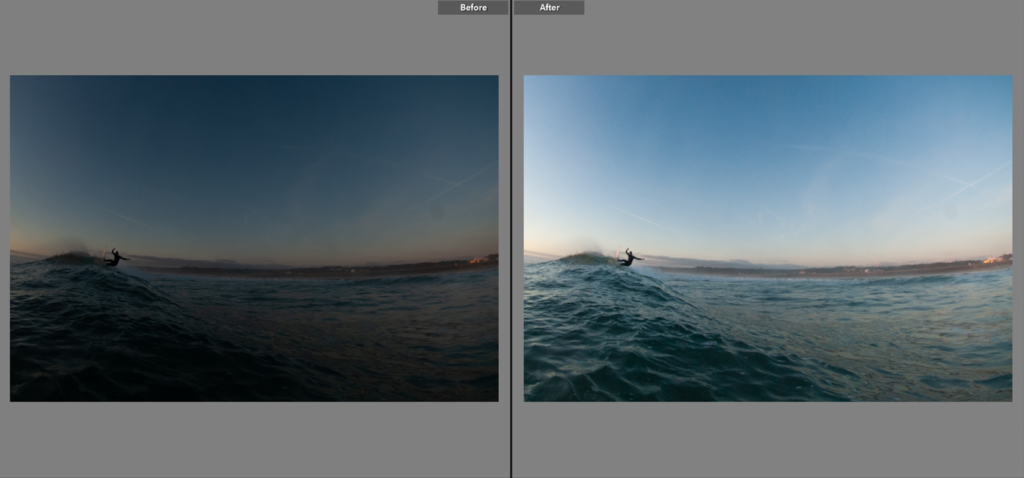
PHOTOSHOOT ONE
What – Documentary style photoshoot of a series of surfers/waves in motion
Why – To observe the practice of surfing in relation to The Decisive Moment
How – In Water Photography Equipment – Waterproof Camera Housing/Lens Port, Cold water Wetsuit Gear, Flippers
When – Late afternoon, Soft Lighting, Colours, Shadows
Where – Watersplash, St Ouens Bay
Hiroshi Sugimoto

“Rather than the camera projecting the outside world onto film, I am using it to project outward the world that exists inside me.”
Hiroshi Sugimoto was born in 1948 in Japan, and divides his time between Tokyo and New York City. Working in photography since the 1970s, his multidisciplinary practice includes sculpture, performing arts production, and architecture. His work explores history and temporal existence by investigating themes of time, empiricism, and metaphysics. Grounded in technical mastery of the classical photographic tradition, he examines the ways photography can record traces of invisible but elemental forces.
Sugimoto’s artistic career has been marked by philosophical curiosity and a serial, analytical approach. For his earliest photographic series, Dioramas, which he began 1974, Sugimoto photographed displays in the American Museum of Natural History and elsewhere. Through the lens of his large-format camera, the museums’ painted backdrops and taxidermied animals are transformed by photography into enigmatically life-like scenes. Theaters, perhaps his most iconic series, comprises long exposure photographs made in classic movie houses around the world. Each exposure is made during the projection of a film, producing a glowing white screen in the center of a darkened theater and compressing time into a single image. His Seascapes, which span more than four decades, record the most elemental scene—sky and water bisected by the constant line of the horizon, a view that Sugimoto associates with the dawn of consciousness.
Seascapes
For more than four decades, Hiroshi Sugimoto has been photographing seascapes around the world. “A sharp horizon line and a cloudless sky- here began my consciousness.” writes Sugimoto, “From there my thoughts race to the origins of human consciousness itself. The sea reminds me that within my blood remain traces of human evolution over hundreds of thousands of years.”
His Seascapes series began in 1999. Photographed with cartographic precision, each image shows sea and sky bisected by a seemingly infinite horizon. Rather than taming the subject through repeated documentation, the series grows more awesome and sublime, until the images reveal only the transient atmospherics—the thickness of fog or stillness of the water.
Water and air. These primordial substances, which make possible all life on earth, are the subject of Hiroshi Sugimoto’s Seascapes series. Sugimoto has called photography the “fossilization of time,” and the ‘Seascapes’ photographs simultaneously capture a discrete moment in time but also evoke a feeling of timelessness.
This volume, the second in a series of books on Sugimoto’s art, presents the complete series of over 200 ‘Seascapes’, some of which have never before been reproduced. All are identical in format, with the horizon line precisely bifurcating each image, though at times the sea and sky almost merge into one seamless unit. Each photograph captures a moment when the sea is placid, almost flat. Within this strict format, however, he has created a limitless array of portraits of his subjects.
Photobook
Size -250 × 277 mm
Pages – 272
Illustrations – 213
Binding – Hardback



Minimalist Photography
Minimalist photography is a form of photography that is distinguished by extreme simplicity. Sometimes in the world of photography, less is more. Minimalist photographers know that sometimes it’s important to focus solely on one particular subject, rather than overwhelm the viewer with tons of color and pattern and information. While there are plenty of successful photographers who take “busy” photographs, photographers on the other end of the spectrum – including Hiroshi Sugimoto and Hans Hiltermann – are successful for completely different reasons. When dealing with minimalism, it’s important to understand the relationship between subject and viewer, texture and pattern, and light and shadow.
Key Elements of Minimalist Photography
Minimalism can be applied to pretty much every genre of photography, including portrait, landscape, still life, architecture, and even street shooting. But minimalist photos do have a few key characteristics:

Image Analysis
Technically – The long exposure used in this photograph creates a smooth and serene effect on the water, giving it a dreamlike quality. The soft lighting and subtle colour palette add to the overall eleagant atmosphere.
Visually – Sugimoto’s decision to place the horizon line in the lower third of the frame emphasizes the vastness of the sea and sky. The minimalistic approach, with the absence of any visible land or human presence, creates a sense of solitude and tranquillity.
Contextually – the Ligurian Sea is located along the Italian coast, known for its picturesque views and beautiful seascapes. Sugimoto’s photograph captures the essence of the Ligurian Sea, evoking a sense of calmness and introspection. It invites the viewer to contemplate the vastness of the ocean and our place within it.
Conceptually – Sugimoto’s “Seascapes” series explores the timeless and universal nature of the sea. By photographing various seascapes, he invites us to reflect on the flow of life, the passage of time, and our connection to the natural world. In “Ligurian Sea, Saviore, 1993,” the photograph embodies a sense of stillness and contemplation, inviting us to pause and appreciate the beauty of the sea.

Inspiration
By exploring the concept of minimalism. Just like Sugimoto’s minimalist approach in his seascapes, I can experiment with simplifying my compositions, focusing on the essential elements of the waves, surfers, and the ocean itself. Sugimoto’s use of long exposures. In his work, the long exposure technique creates a smooth and ethereal effect on the water. Sugimoto’s emphasis on the relationship between the sea and the sky. By paying attention to the colours, tones, and textures of the sky and how they interact with the waves, I can produce a similar response to Sugimoto’s work.
Mood board in relation to Hiroshi Sugimoto

Henri Cartier Bresson

Henri Cartier-Bresson was a French photographer who is considered to be one of the fathers of photojournalism and masters of candid photography. He sought to capture the ‘everyday’ in his photographs and took great interest in recording human activity. He pioneered the genre of street photography, and viewed photography as capturing a decisive moment, which he later wrote a book about. He was influenced by Surrealism and began his career in film working with renowned French director, Jean Renoir as second assistant director. He was born on the 22nd of August, 1908 In Chanteloup-en-Brie, France and passed away on the 3rd of August, 2004 in Céreste, France.

He came from quite a wealthy family and since his parents were providing financial support, Henri pursued photography quite freely. His father assumed that his son would take up the family business, but Henri was strong-willed and also feared the idea. In 1929, Cartier-Bresson’s air squadron commandant placed him under house arrest for hunting without a licence. Cartier-Bresson met American expatriate Harry Crosby, who persuaded the commandant to release Cartier-Bresson into his custody for a few days. The two men both had an interest in photography, and Crosby presented him with his first camera.
Cartier-Bresson ended up falling into an intense sexual relationship with Caresse Crosby (Harry Crosby’s wife) however, two years after Harry Crosby died by suicide, Cartier-Bresson’s affair with Caresse Crosby ended in 1931. After reading the book, Heart of Darkness, which gave him the idea to try and find adventure in Côte d’Ivoire, Africa. He survived by shooting game and selling it to local villagers. From hunting, he learned methods which he later used in photography.
He acquired the Leica camera with a 50 mm lens in Marseilles that would accompany him for many years. The anonymity that the small camera gave him in a crowd or during an intimate moment was essential in overcoming the formal and unnatural behaviour of those who were aware of being photographed. He enhanced his anonymity by painting all shiny parts of the Leica with black paint. In the beginning, he did not photograph much in his native France. It would be years before he photographed there extensively. Cartier-Bresson’s first photojournalist photos to be published came in 1937 when he covered the coronation of King George VI and Queen Elizabeth.

“For me the camera is a sketch book, an instrument of intuition and spontaneity, the master of the instant which, in visual terms, questions and decides simultaneously. In order to ‘give a meaning’ to the world, one has to feel involved in what one frames through the viewfinder. This attitude requires concentration, discipline of mind, sensitivity, and a sense of geometry. It is by economy of means that one arrives at simplicity of expression.”
The Decisive Moment
Size – 27.4 x 37 cm
Pages – 160 + 48 booklet pages
Binding – Clothbound in slipcase


The Decisive Moment is a book by Henri Cartier-Bresson, a French photographer who is credited with pioneering modern photojournalism. The book is a collection of his best-known photographs, accompanied by his thoughts on photography and the creative process. The title refers to the idea that photography captures a single moment in time, and that the photographer’s job is to be in the right place at the right time to capture that moment.
In Henri Cartier-Bresson’s seminal book, in English called “The Decisive Moment” and in French “Images à la Sauvette” (1952), Henri Cartier-Bresson assembled a selection of his photographs of various subjects, in a novel style that was made possible by a small, nimble hand-held camera, in the hands of a master, who had a great eye and a classical background in composition. The book has come to be, perhaps, the most important book ever published in the field of photography.
Photojournalism/Candid Photography
Photojournalism is a form of visual storytelling and reporting. There is no one right way to tell a story through images: a handful of pictures can complement a text, but a single dramatic image can also furnish stand-alone commentary on an individual, world events or culture. No matter how the story is told, photojournalists seek to enlighten audiences by capturing a crystallizing image. Photojournalism entered a Golden Age and became more important beginning in the 1920s, with the arrival of smaller cameras like the 35 mm Leica, which was invented in Germany in 1925. These cameras were seen as revolutionary by photographers everywhere, as much less equipment was required for them to set up and take their pictures. Candid Photography is a genre of photography that spontaneously captures the organic, genuine, and unposed moments of a subject. Bresson is one of the earliest users of 35mm film and is widely acknowledged as the master of candid photography.

Image Analysis
Technically – Cartier-Bresson’s use of a small Leica camera allowed him to be discreet and capture candid moments. In this photograph, he employed a slow shutter speed to allow for a sense of motion, resulting in a blurred figure.
Visually – Cartier-Bresson positioned himself opposite station, capturing the reflection of the surrounding buildings and the figure. The presence of the lines and the converging perspective draw our attention towards the central figure, creating a strong focal point.
Contextually – “Gare Saint Lazare” is a significant location in Paris, known for its bustling train station. Cartier-Bresson’s photograph captures the essence of urban life, the movement, and the energy of people rushing to catch their trains. It reflects the rapid pace of the human experience within the urban environment.
Conceptually – The photograph embodies Cartier-Bresson’s philosophy of the decisive moment. The split-second timing of capturing the people and the reflection in perfect harmony creates a sense of chance and captures a fleeting moment that tells a story.

The Decisive Moment in relation to My Ideas
The Decisive Moment in Surf/Sea photography is all about capturing the peak action, the energy, and the fluidity of the waves and surfers. It’s about freezing that split-second when everything comes together in a visually captivating way. To apply this concept, I will need to anticipate the perfect moment when the wave is at its most dynamic, the surfer is in the ideal position, and the composition is just right. A photo series by Matt Porteous has inspired me to produce a similar outcome.
Below the Breaking Wave
”Photographer Matt Porteous of M Studio takes us along to the Maldives, beneath the surface of the Indian Ocean, in his powerful photo series Below the Breaking Wave. Porteous has always held a fascination for water, having grown up along the rugged Jersey coastline of the Channel Islands. It was this close proximity to the water that encouraged surfing, swimming and diving, cementing a special place in his heart for the ocean.
The series features surfers underneath a breaking wave, preparing themselves to swim toward a cloud-like mass of bubbles and froth. What we see and feel during that split second we find ourselves underneath a passing wave, he notes, is symbolic of the world we live in today: beauty, clarity and chaos. Staunchly passionate about the preservation and guardianship of the ocean, Porteous’ photography carries a distinct message: ”We live in an incredible time surrounded by a beautiful world, but we must search further to find, and work harder to protect”

I aim to explore the concept of the decisive moment in water and underwater surf/ocean photography; drawing inspiration from the works of Hiroshi Sugimoto, Woody Gooch, and Henry Cartier-Bresson. I want to delve into capturing those fleeting moments of beauty and emotion beneath the waves, seeking to convey the essence of the ocean’s power and tranquillity. This project matters to me as I have always been fascinated by the interplay of light, movement, and nature in aquatic environments. I see this as an opportunity to push the boundaries of traditional surf photography and create evocative images that resonate with viewers on a deeper level. I plan to develop my project by experimenting with different techniques and equipment to master the art of capturing the decisive moment underwater. I aim to explore unique angles, lighting effects, and compositions to create visually striking and emotionally resonant images that tell a story of the ocean’s ever-changing beauty. I intend to begin my study by immersing myself in the world of underwater photography, starting with research on the works of these influential photographers and practicing basic techniques in water photography. I plan to initiate my project at a local beach with strong waves, where I can start honing my skills and developing my unique style in capturing the decisive moments beneath the surface.
Observe
VERB
‘Observe’ within Photography
”The Art of Observation: Observation lies at the heart of street photography. It goes beyond just seeing; it involves truly looking and actively seeking out the details that make a scene come alive.”
Observation involves immersing ourselves in listening and looking, taking in sounds, sights, and smells in a careful, unbiased manner. It is a key attribute of any seasoned photographer; the difference between an average photo and one that speaks to an audience in a meaningful way. From nature to urban spaces to people and objects, there are many key takeaways that artists can find by observing surroundings. Taking note of direction of light, softness of shadows, and featured colours can lead to a successful finished product.
Seek
VERB
‘Seek’ within Photography
”Seek” in the context of photography signifies a purposeful action of actively searching for subjects, moments, or compositions to capture. It implies a proactive approach to photography, where the photographer is not merely a passive observer but an engaged seeker of visual opportunities. By seeking out interesting subjects, unique angles, or compelling moments, photographers can create impactful and meaningful images that tell a story or evoke emotions.
Challenge
NOUN
VERB
‘Challenge’ within Photography
”Challenge” in the context of photography, it represents an opportunity for growth and exploration. Challenges in photography can come in various forms, such as capturing difficult lighting conditions, mastering complex techniques, or finding unique perspectives in familiar subjects. Embracing these challenges can push photographers to expand their skills, creativity, and vision. Encouraging them to step out of their comfort zones and experiment with new approaches. Overcoming these challenges can lead to personal and artistic development, resulting in photographs that are more impactful and visually compelling.
Mood Boards
Observe

Seek

Challenge

Mind map
